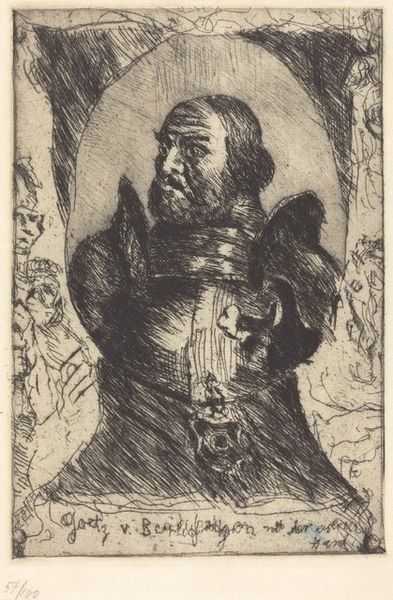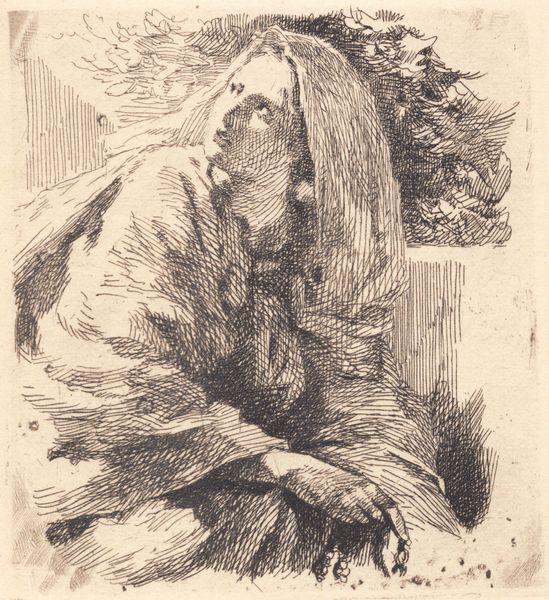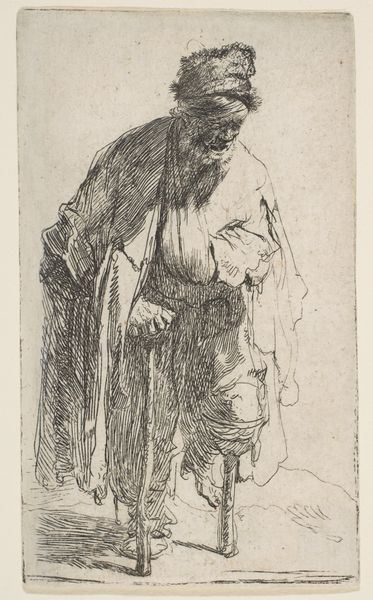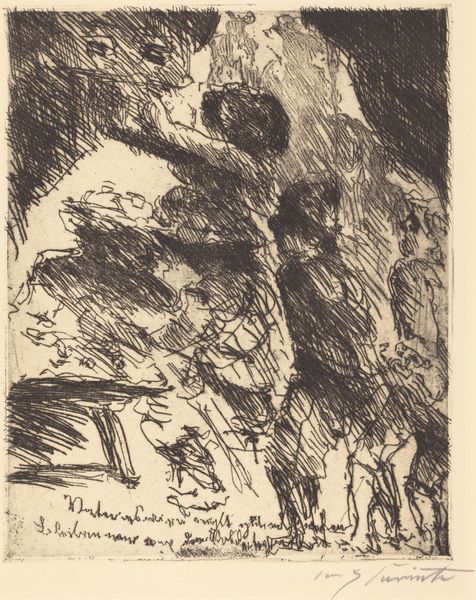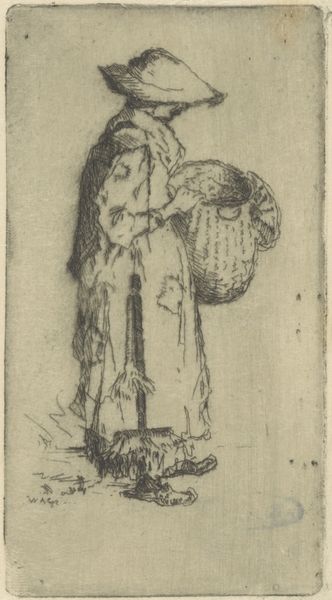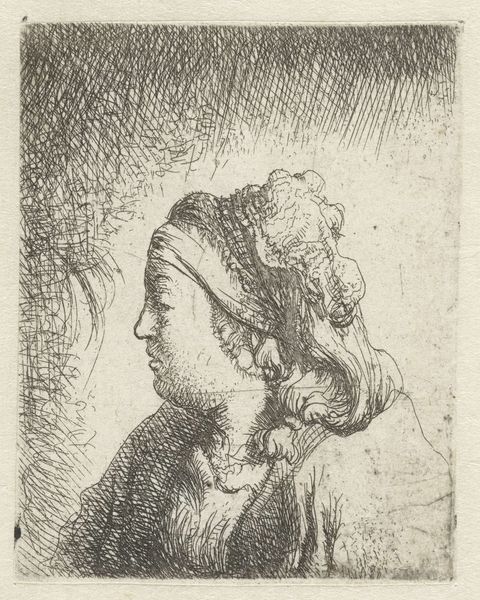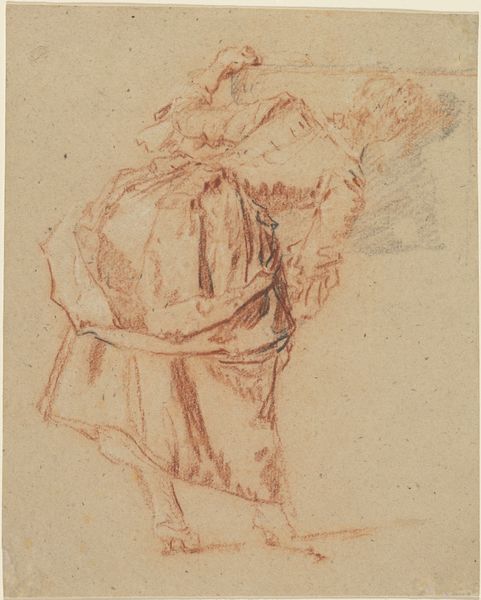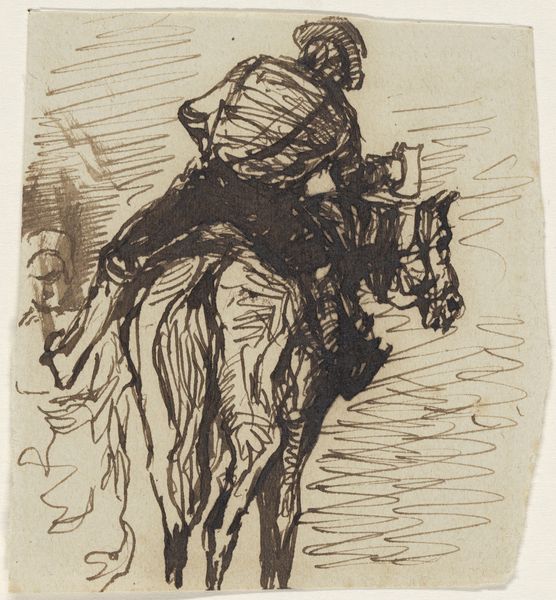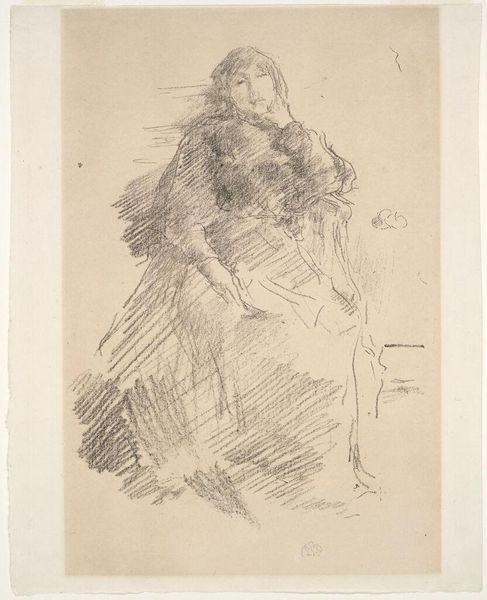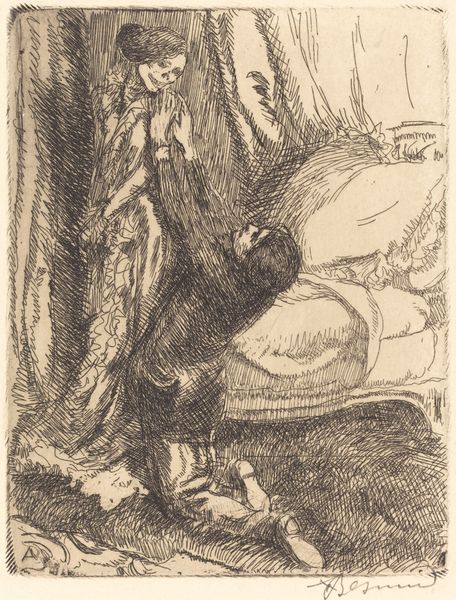
print, etching
#
portrait
#
baroque
# print
#
etching
#
figuration
#
orientalism
#
line
#
history-painting
Dimensions: height 156 mm, width 134 mm
Copyright: Rijks Museum: Open Domain
Curator: Rembrandt van Rijn’s 1635 etching, "The third Oriental head," currently residing at the Rijksmuseum, presents a striking example of the artist’s interest in exotic themes and portraiture. Editor: There’s a certain somberness to the composition; a contemplative, almost weary mood pervades the figure. The texture seems particularly rich, almost tactile. Curator: Rembrandt’s choice of etching is crucial. The medium allowed for a remarkable level of detail and tonality, observe the intricate lines depicting the subject’s beard, clothing, and turban. He utilized a technique that effectively captures light and shadow, heightening the dramatic effect. Editor: Yes, the baroque emphasis on tenebrism is readily apparent. Consider also the structure. The composition has this dynamism, largely due to the subject's positioning against an implied setting that pushes our eye to his regal headpiece, almost like he's been caught off guard, lost in thoughts. Curator: His work from this period reflects a growing engagement with the Dutch East India Company and their imported commodities, and you can see him referencing oriental garments and props as a source of wealth, trade, and cultural interaction, raising questions about colonialism's effects. Rembrandt wasn’t simply creating a likeness; he was participating in constructing an orientalist vision. Editor: An orientalist vision perhaps filtered through his understanding of light and form, that emphasizes a psychological element. This is not merely documentation; the head emerges, like from a shadow, to suggest much more. This is emphasized with his controlled cross-hatching, creating contrast which lends it depth. Curator: Ultimately, analyzing Rembrandt’s etching, situating its creation during a period marked by growing global trade, sheds light on a visual negotiation of identity, influence, and material culture. Editor: And on a purely formal level, the artwork has these timeless structural properties where light and shadow meet to define expression and suggest a kind of mystery and presence.
Comments
No comments
Be the first to comment and join the conversation on the ultimate creative platform.

